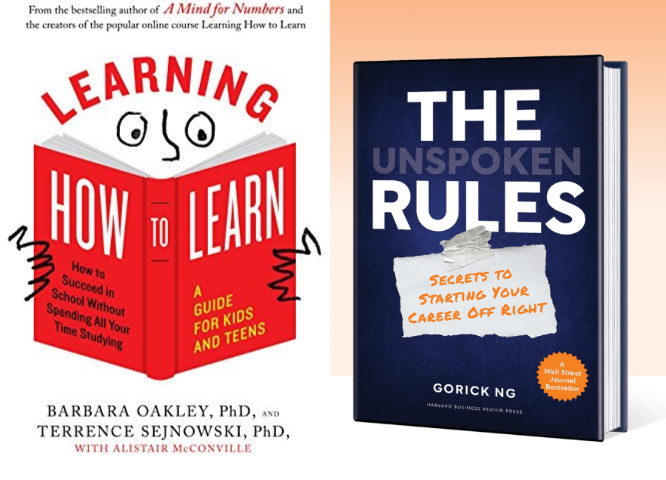As I resolve to read more books in 2024, I’m reminded of two books that stand out from past reading. These two books are: “Learning How to Learn: a Guide for Kids and Teens,” by Barbara Oakley, and “The Unspoken Rules: Secrets to Starting Your Career Off Right,” by Gorick Ng.
Oakley’s book came to me after I had read (well, listened to — audiobooks are a great way to get more learning in while driving or doing ordinary type chores like washing dishes) her book “A Mind for Numbers.” Upon learning that Oakley had a book written for younger audiences, I bought a number of copies and proceeded to give them to my kids and my friends’ kids. My daughter read hers in her freshman year of high school, then breezed through most of her classes for the next four years.
Oakley’s book falls into the category of metalearning, the study of how we learn. It’s particularly valuable for those with concentration difficulties, or for those who simply like to get more results for their investment of time. It’s also affirming and reassuring at the same time: reminding us how even the hardest of problems can be overcome when tackled in a systematic manner and with perseverance.
The Unspoken Rules by Gorick Ng is a book that I wish was available when I was growing up. The author’s story of how he came to write it is interesting too. He is a first-generation college graduate, a kid growing up in poverty to a single mother whose seamstress job could offer him little in terms of networking or career advice.
I came to learn of Ng’s book through an article in the New York Times Vows section, “A Friendship Evolves, Thanks to an Unusual Date — With Grandpa.” The article details how he met his wife through networking ten years prior: a series of phone calls to ask about how to get a job in investment banking, a job she held even before her own graduation from Berkeley.
His own story and forward tells of how he recognized the distinct disadvantage of not having the resources his Harvard classmates had: parents who could both introduce him to potential employers, then prepare him for the job. The book is detailed enough to go beyond what those of us in the older generation might regard as common sense. I picked up quite a few tips myself as the younger generation has entered into a whole new world of work in which video conferences, email and remote work are part of the equation.
I can highly recommend these two books as solid foundations for a young person’s journey into adulthood. It’s also never too late for older adults to learn to learn and reinvigorate solid work habits.
